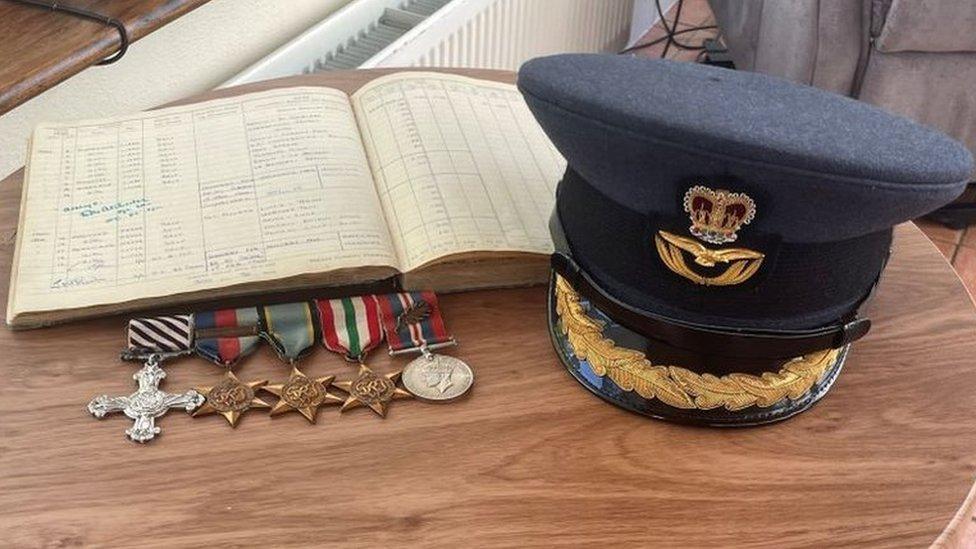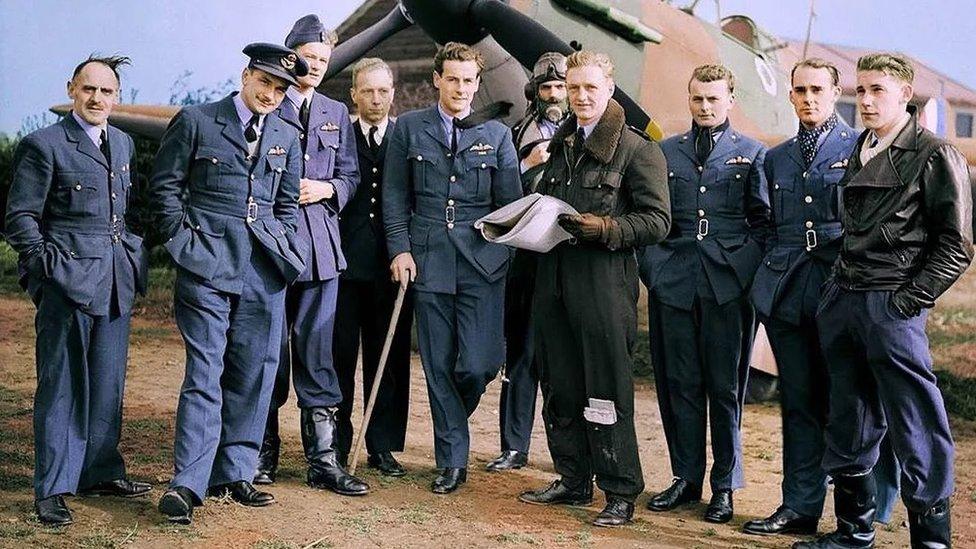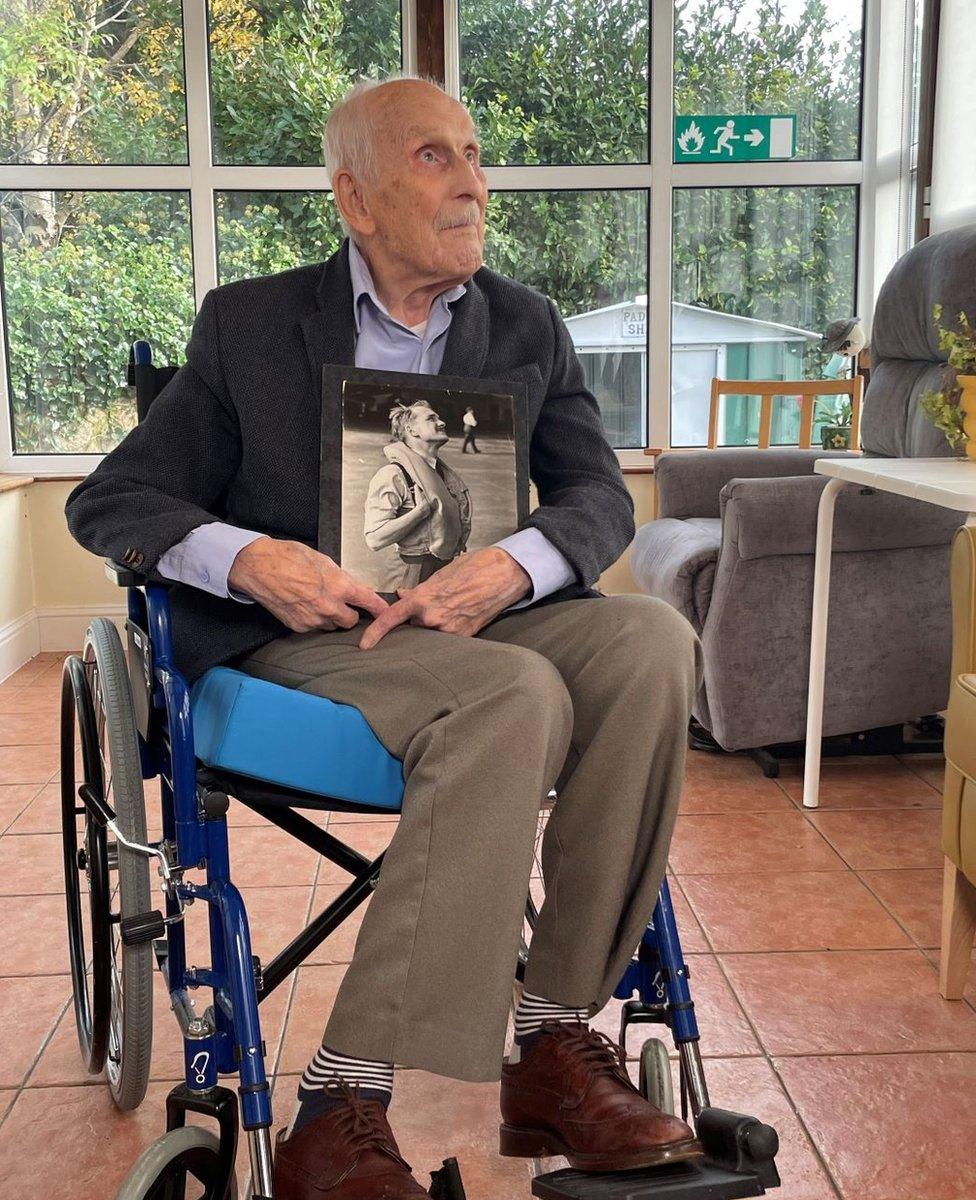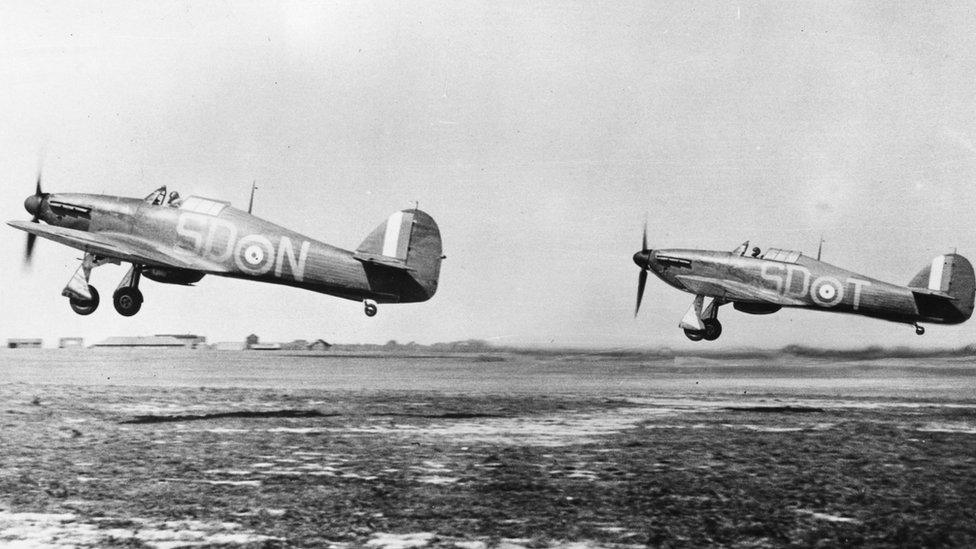Battle of Britain: Pilot John Hemingway says he was lucky to survive war
- Published

John Hemingway is the last fighter pilot alive who fought in the Battle of Britain
"I'm not a great man - I'm just a lucky man."
So says the Irishman who is the last known surviving member of the group Sir Winston Churchill famously described as "the few".
Group Captain John Hemingway, now 104, was a fighter pilot in the Battle of Britain.
He now lives back in the city he was brought up in - Dublin - and credits "Irish luck" with helping him survive being shot down four times.
He joined the RAF as a teenager before World War Two.
When he was 21 he was a fighter pilot in the Battle of Britain, a three-month period when air force personnel defended the skies against a large-scale assault by the German air force, the Luftwaffe.
Churchill said of the pilots: "Never in the field of human conflict has so much been owed by so many to so few."
The battle in 1940 was a turning point in the conflict but Gp Capt Hemingway has never looked for accolades or fame for his part.
"I don't think we ever assumed greatness of any form," he tells the BBC.
"We were just fighting a war which we were trained to fight."
Gp Capt Hemingway's recollections and reflections on the war are focused on his role as a professional pilot.
He says: "We were doing a job we were employed to do. We just went up and did the best we could."
'Dogfights' with German pilots
He explains the approach airmen took during one-on-one aerial combat - known as "dogfights" - which were often over in just a few seconds.
"There were two of you. One of you was going to be dead at the end.
"You thought: 'Make sure that person was not you.'"
"Every day, off you went.
"When you took off you knew some of you would come back - and some of you wouldn't."

King George VI awarded Gp Capt Hemingway the Distinguished Flying Cross, pictured on the left of this row of medals
Gp Capt Hemingway was shot down four times during the war.
Two of those occasions happened in the space of eight days - during the Battle of Britain.
He recorded in his logbook that on 18 August 1940 he bailed out of his Hurricane near the Thames Estuary after it was hit by a German aircraft.
"If you didn't bail out you knew you would be dead," he says.
Hurricane wreckage found decades later
He parachuted into the North Sea and was eventually rescued by a lifeboat.
He says the thought of being in the ocean, and not knowing whether he would drown or live, was "dreadful".
"You felt all the time you were part of something which would save you.
"But if it ever came to the point where you were just alone that would have been quite horrible."
He was back in a plane two days later.
On 26 August he was shot down in combat off the coast of Kent and landed in Pitsea Marshes.
The wreckage of his Hurricane was recovered in 2019 with the control column and the gun-button frozen in time, still set to "fire".
John spent most of the war with 85 Squadron.
One of his most prominent memories is of Flt Lt Richard "Dickie" Lee.
"He was incredible - a wonderful pilot.
"Dickie Lee could do anything - fly across an airfield, upside down, firing at a target and hitting the target."
"Dickie" Lee was one of more than 500 of John's fellow pilots who were killed during the Battle of Britain.
'First-class pilots'
John's Squadron leader was Peter Townsend, later the fiancé of Princess Margaret.
"He was a very nice person and a very good leader," says John.
"He always went in first."
Peter Townsend is standing with John and eight other men in uniform in front of a Hurricane in one of John's photographs.

Gp Capt Hemingway, second from left in this photograph, served alongside Peter Townsend (centre, holding a cane)
When asked what his thoughts are about the picture, he says: "They were first-class pilots.
"There are lots of aces in this photograph."
But he points to himself and chuckles: "That's not one of them!"
Another photograph of John featured on the cover of the American magazine Life.
It shows him looking up to the sky.

Gp Capt Hemingway says this was the photograph that allowed his family to see what he did at work
"This was the most important photograph ever taken of me," says John.
"It made me into a fighter pilot in the eyes of others.
"It meant my family were able to see me at work."
The image is now captured in a sculpture of John by the artist Stephen Melton at the Kent Battle of Britain Museum.
John was awarded the Distinguished Flying Cross and mentioned in dispatches at 1941.
Spitfire crash and Irish luck
In all he was shot down four times during the war.
The last incident was in 1945 when he was flying a Spitfire behind enemy lines in Italy.
Local people helped to put him in the hands of the Italian resistance and he was taken back to Allied troops.
At one point a young girl, who he thinks was only about seven years old, led him by the hand past scores of German soldiers.
John thinks of all those who came to his aid during the war with "huge gratitude".
"They were brilliant people - they risked their lives."
He modestly puts his long life down to "luck".
Specifically, he tells us, "Irish luck".
"It must be to do with something like that because here I am, an Irishman, talking to you.
"I was shot down many times but I'm still here.
"So many others were shot down first time and that was the end of them.
"I was lucky. And I'm still lucky."
- Published20 September 2020

- Published15 September 2020
